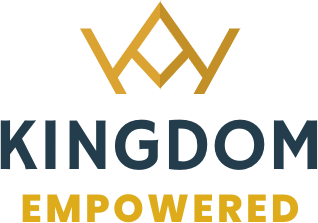Identification, Methods, and Social Impact
Introduction: Defining the Undefinable
The term "cult" carries significant emotional weight, often used pejoratively against any unfamiliar religious practice. However, scholars, psychologists, and sociologists have developed objective criteria for identifying genuinely harmful religious organizations that exhibit cult characteristics. This analysis focuses on behavioral patterns, organizational structures, and measurable social impacts rather than theological beliefs.
Understanding cult dynamics is crucial for protecting individuals, families, and communities from psychological manipulation and institutional abuse, particularly when children are involved.
What Makes a Cult? The Academic Definition
Core Characteristics According to Research
Authoritarian Leadership Structure
Single leader or small group claiming divine authority.
Leadership decisions are unquestionable and beyond criticism.
Leaders live by different rules than members.
Succession crises when leaders die or become incapacitated.
Information and Communication Control
Restriction or prohibition of outside media consumption.
Discouragement of contact with former members or critics.
Internal publications as sole "reliable" information sources.
Punishment for accessing "forbidden" information.
Financial Exploitation
Mandatory tithing, donations, or property surrendering.
Members working for below-market wages in organization businesses.
Leadership accumulating wealth while members sacrifice financially.
Complex business structures hiding asset concentration.
Social Isolation Mechanisms
Discouragement of relationships with non-members.
Geographic separation from family and former communities.
Time-intensive activities preventing outside relationship development.
Punishment systems for maintaining "unauthorized" relationships.
Thought Reform and Mind Control
Repetitive indoctrination sessions.
Sleep deprivation and nutritional control.
Confession rituals creating psychological vulnerability.
Redefining language to control thinking patterns.
The Formation Process: How Cults Begin and Evolve
Stage 1: Charismatic Foundation
Most cults begin with a charismatic leader who:
Claims special revelation, divine calling, or unique insight.
Attracts initial followers through personal magnetism.
Develops distinctive beliefs that separate the group from mainstream society.
Establishes early control mechanisms disguised as spiritual practices.
Stage 2: Institutional Development
As the group grows, it develops:
Formal organizational structures.
Financial systems for resource collection and control.
Internal disciplinary mechanisms.
Physical locations for member concentration.
Stage 3: Expansion and Control Intensification
Mature cult organizations typically exhibit:
Aggressive recruitment tactics.
Increased isolation of members from outside influences.
More sophisticated psychological manipulation techniques.
Development of multiple revenue streams and business enterprises.
Stage 4: Crisis Management and Adaptation
When facing external pressure or internal challenges:
Public relations campaigns to improve image.
Legal strategies to protect leadership and assets.
Modification of most obviously problematic practices.
Increased emphasis on persecution narratives.
Methods of Operation: The Cult Playbook
Recruitment Strategies
Love Bombing
Overwhelming new recruits with attention and affection.
Creating artificial sense of belonging and acceptance.
Identifying and exploiting personal vulnerabilities.
Making leaving psychologically painful due to relationship loss.
Gradual Commitment Escalation
Starting with small, reasonable requests.
Progressively increasing demands for time, money, and obedience.
Using previous commitments to justify larger sacrifices.
Making exit costs increasingly prohibitive.
Targeting Vulnerable Populations
Recent life transitions (divorce, death, job loss, relocation).
Young adults seeking identity and purpose.
Individuals with mental health struggles or trauma histories.
People experiencing spiritual seeking or religious questioning.
Control Mechanisms
Information Management
Controlling access to outside perspectives and criticism.
Creating internal echo chambers, reinforcing group beliefs.
Reframing external criticism as persecution or spiritual warfare.
Using specialized language that creates in-group identity.
Financial Entanglement
Requiring substantial financial commitments.
Encouraging members to work for organization's businesses.
Creating economic dependency on the organization.
Making financial exit costs prohibitively high.
Social and Emotional Manipulation
Creating shame and guilt for questioning or doubting.
Using public confession and criticism sessions.
Alternating between punishment and reward to create psychological dependency.
Exploiting natural human needs for belonging and purpose.
Physical and Geographic Control
Encouraging or requiring communal living arrangements.
Restricting travel and movement.
Controlling schedules to minimize outside contact.
Using exhaustion and sleep deprivation to reduce critical thinking.
The Damage: Individual and Social Consequences
Impact on Children
Psychological Development
Exposure to adult psychological manipulation techniques.
Disrupted attachment patterns due to communal child-rearing.
Delayed social development from isolation from mainstream society.
Identity formation problems when raised in totalistic environments.
Educational Deprivation
Substandard education focusing on organizational doctrine.
Lack of preparation for life outside the organization.
Suppression of critical thinking skills.
Limited exposure to diverse ideas and perspectives.
Physical and Sexual Abuse
Higher rates of physical punishment justified by religious doctrine.
Increased vulnerability to sexual abuse due to authoritarian structures.
Medical neglect when organizations discourage outside healthcare.
Nutritional and physical neglect in communal living situations.
Long-term Consequences
Difficulty forming healthy relationships outside the organization.
Economic disadvantage due to limited education and work experience.
Mental health problems including depression, anxiety, and PTSD.
Challenges with decision-making and independent living.
Impact on Families
Relationship Destruction
Systematic breaking of family bonds not aligned with organization.
Encouragement of reporting family members for "spiritual violations."
Pressure to choose organization loyalty over family relationships.
Generational trauma affecting multiple family members.
Economic Exploitation
Family assets transferred to organizational control.
Unpaid or underpaid labor for organizational benefit.
Business decisions made based on organizational rather than family interests.
Retirement and inheritance assets diverted to organization.
Psychological Trauma
Families torn apart by competing loyalties.
Guilt and shame for questioning organizational authority.
Fear-based decision making regarding family welfare.
Intergenerational transmission of trauma and control patterns.
Community Impact
Democratic Participation
Bloc voting patterns that undermine democratic representation.
Infiltration of local government positions.
Use of political power to benefit organization interests.
Suppression of dissenting voices in community governance.
Economic Distortion
Monopolistic business practices within controlled communities.
Labor market manipulation through below-market wage practices.
Tax avoidance strategies that shift burden to other community members.
Real estate manipulation affecting housing availability and pricing.
Social Services Strain
Higher rates of mental health problems requiring community resources.
Educational system challenges accommodating organizationally-controlled children.
Law enforcement complications when organization members protect each other.
Healthcare system stress from delayed or avoided medical care.
Cultural and Social Fabric
Reduced social trust within communities.
Polarization between organization members and others.
Suppression of cultural diversity and expression.
Creation of parallel social structures that avoid mainstream integration.
The Cult Assessment Framework: Objective Evaluation Criteria
Section A: Leadership and Authority Structure (25 points possible)
Question 1: Leadership Accountability (5 points)
5 points: Leaders subject to democratic oversight and can be removed by membership.
3 points: Limited accountability mechanisms exist but are rarely used.
1 point: Leadership claims divine authority but allows some questioning.
0 points: Leadership claims absolute authority and prohibits questioning.
Question 2: Financial Transparency (5 points)
5 points: Complete financial disclosure to members and public.
3 points: Basic financial information provided to members.
1 point: Limited financial information available.
0 points: Financial information kept secret from members.
Question 3: Succession Planning (5 points)
5 points: Clear, democratic succession processes.
3 points: Formal succession plan with some member input.
1 point: Succession controlled by existing leadership.
0 points: Succession based on family relationships or personal appointment.
Question 4: Leadership Lifestyle (5 points)
5 points: Leaders live modestly, similar to average members.
3 points: Leaders live comfortably but not excessively.
1 point: Leaders live significantly better than members.
0 points: Leaders live lavishly while members sacrifice.
Question 5: Criticism Tolerance (5 points)
5 points: Criticism and questioning encouraged and addressed constructively.
3 points: Some criticism tolerated but discouraged.
1 point: Criticism met with defensive responses.
0 points: Criticism forbidden and punished.
Section B: Information and Communication Control (20 points possible)
Question 6: External Media Access (5 points)
5 points: Members freely access all external media and information.
3 points: Some restrictions on specific types of media.
1 point: Strong discouragement of external media consumption.
0 points: External media forbidden or strictly controlled.
Question 7: Educational Freedom (5 points)
5 points: Members encouraged to pursue diverse education.
3 points: Education supported but with organizational preference.
1 point: Higher education discouraged or restricted.
0 points: Education outside organization prohibited.
Question 8: Former Member Contact (5 points)
5 points: Contact with former members freely allowed.
3 points: Contact discouraged but not forbidden.
1 point: Contact with former members strongly discouraged.
0 points: Contact with former members prohibited.
Question 9: Internal Dissent (5 points)
5 points: Internal disagreement and debate encouraged.
3 points: Some internal discussion allowed.
1 point: Internal dissent discouraged.
0 points: Internal dissent forbidden and punished.
Section C: Financial Practices (20 points possible)
Question 10: Financial Obligations (5 points)
5 points: No mandatory financial contributions.
3 points: Suggested voluntary contributions.
1 point: Strong pressure for specific percentage contributions.
0 points: Mandatory financial contributions with punishment for non-compliance.
Question 11: Asset Control (5 points)
5 points: Members maintain complete control of personal assets.
3 points: Members encouraged to donate assets but retain control.
1 point: Strong pressure to transfer assets to organization.
0 points: Members required to transfer assets to organization.
Question 12: Employment Practices (5 points)
5 points: Members free to work anywhere at market wages.
3 points: Preference for organization employment but choice allowed.
1 point: Strong pressure to work for organization below market wage.
0 points: Members required to work for organization at below-market wages.
Question 13: Business Relationships (5 points)
5 points: Open competition, no preferential treatment for organization businesses.
3 points: Some preference for organization businesses but choice allowed.
1 point: Strong pressure to use only organization businesses.
0 points: Members required to use only organization-approved businesses.
Section D: Social Control and Isolation (20 points possible)
Question 14: Family Relationships (5 points)
5 points: Family relationships outside organization fully supported.
3 points: Some tension but family relationships maintained.
1 point: Family relationships strained by organization demands.
0 points: Members required to cut ties with non-member family.
Question 15: Geographic Mobility (5 points)
5 points: Members free to live anywhere.
3 points: Preference for living near other members but choice allowed.
1 point: Strong pressure to live in organization-controlled areas.
0 points: Members required to live in specific organization-controlled locations.
Question 16: Time Commitments (5 points)
5 points: Minimal organizational time requirements.
3 points: Regular but reasonable time commitments.
1 point: Extensive time commitments limiting outside activities.
0 points: Total life schedule controlled by organization.
Question 17: Marriage and Relationships (5 points)
5 points: Complete freedom in relationship and marriage choices.
3 points: Preference for in-group relationships but choice allowed.
1 point: Strong pressure to marry within organization.
0 points: Organization controls marriage and relationship decisions.
Section E: Child Welfare and Development (15 points possible)
Question 18: Educational Choices (5 points)
5 points: Parents free to choose any educational option.
3 points: Preference for organization education but choice allowed.
1 point: Strong pressure for organization-controlled education.
0 points: Children required to attend only organization-controlled education.
Question 19: Healthcare Decisions (5 points)
5 points: Standard medical care encouraged and supported.
3 points: Some alternative health preferences but standard care allowed.
1 point: Standard medical care discouraged.
0 points: Standard medical care forbidden.
Question 20: Child Protection (5 points)
5 points: Robust child protection policies with external oversight.
3 points: Basic child protection policies.
1 point: Minimal child protection measures.
0 points: No independent child protection mechanisms.
Scoring and Interpretation
Total Score Assessment:
90-100 Points: Low Cult Risk
Organization demonstrates healthy religious community characteristics.
Strong democratic accountability and transparency.
Minimal risk to individual or community welfare.
Children protected and educated according to mainstream standards.
70-89 Points: Moderate Concern
Some concerning practices but not systematically harmful.
Areas for improvement in transparency or member autonomy.
Monitoring recommended for vulnerable members.
Children generally protected but some restrictions may apply.
50-69 Points: High Cult Risk
Multiple concerning practices indicating systematic control.
Significant risk to individual autonomy and family relationships.
External intervention may be necessary to protect vulnerable members.
Children at risk for educational and developmental limitations.
30-49 Points: Severe Cult Characteristics
Systematic exploitation and control of members.
Serious risk to individual and family welfare.
Immediate external intervention recommended.
Children at serious risk for abuse and developmental harm.
0-29 Points: Dangerous Cult
Organization exhibits classic cult characteristics.
Extreme danger to individual and community welfare.
Legal intervention likely necessary.
Children in immediate danger and require protection.
Additional Risk Factors (Subtract 5 points each if present):
History of physical or sexual abuse cover-ups.
Legal violations by leadership.
Financial fraud or misrepresentation.
Documented retaliation against former members.
Systematic discrimination against non-members in business or community dealings.
Case Study Application Framework
Historical Analysis Requirements:
Document behavioral patterns over time (minimum 10-year period).
Measure community impact statistics (suicide rates, domestic violence, education outcomes).
Analyze financial practices (transparency, member exploitation, asset accumulation).
Evaluate child welfare outcomes (educational achievement, mental health, integration into broader society).
Assess democratic participation (voting patterns, political influence, representation).
Red Flag Indicators Requiring Immediate Investigation:
Youth suicide rates significantly above national averages in organization-dominated areas.
Systematic exclusion of non-members from economic opportunities.
Legal system bias favoring organization members.
Media control or suppression of critical coverage.
Financial holdings disproportionate to stated religious mission.
Conclusion: Protection Through Understanding
Understanding cult dynamics isn't about attacking religious freedom—it's about protecting human dignity, democratic governance, and child welfare. Healthy religious communities welcome accountability, transparency, and external evaluation because they have nothing to hide.
Organizations that resist objective evaluation, refuse financial transparency, or create systematic harm to individuals and communities deserve scrutiny regardless of their religious claims. The framework provided here offers objective criteria for identifying genuinely harmful religious organizations while protecting legitimate religious expression.
Most importantly, this analysis serves as a tool for protecting the most vulnerable members of society—children who cannot protect themselves from institutional exploitation and adults who may be trapped in psychologically manipulative systems.
Religious freedom and institutional accountability are not opposing values—they are complementary requirements for a healthy democratic society where all individuals can flourish spiritually without sacrificing their fundamental human rights.
The full exposé consists of five additional investigations that will forever change how you view institutional religious control in America:
"Exposing The Utah Deep State: A Call to Save God's Children" - The complete statistical breakdown and systematic documentation of how a $100+ billion religious empire operates while children die at America's highest suicide rates.
"Understanding Religious Cults: Identification, Methods, and Social Impact" - The objective academic framework that reveals how to identify harmful religious organizations using measurable criteria rather than theological opinion.
"LDS Church Assessment Using Cult Identification Framework" - The shocking results when objective cult criteria are applied to Utah's dominant institution, revealing a score that predicts exactly the community devastation we observe.
"The Cries of the Children: A Call to Stand for the Voiceless" - The rallying cry for every person of conscience to join the fight for justice and vindication of those whose voices have been silenced forever.
"Where Are Our Champions?" - The urgent appeal to America's most powerful change agents to deploy their resources and influence to save Utah's children before more lives are lost.
Each article builds upon the last, creating an irrefutable case for immediate action. The children cannot wait. Justice cannot be delayed. Read them all—their lives depend on it.
May God grant us the courage to act on this evidence, the wisdom to implement comprehensive reform, and the mercy to heal the wounds created by institutional religious abuse. The children are counting on us. Their blood cries out from the ground for justice. How long, O Lord, will we wait to answer their cries?
"He has told you, O man, what is good; And what does the LORD require of you But to do justice, to love kindness, And to walk humbly with your God?" - Micah 6:8
For those LEFT BEHIND.


